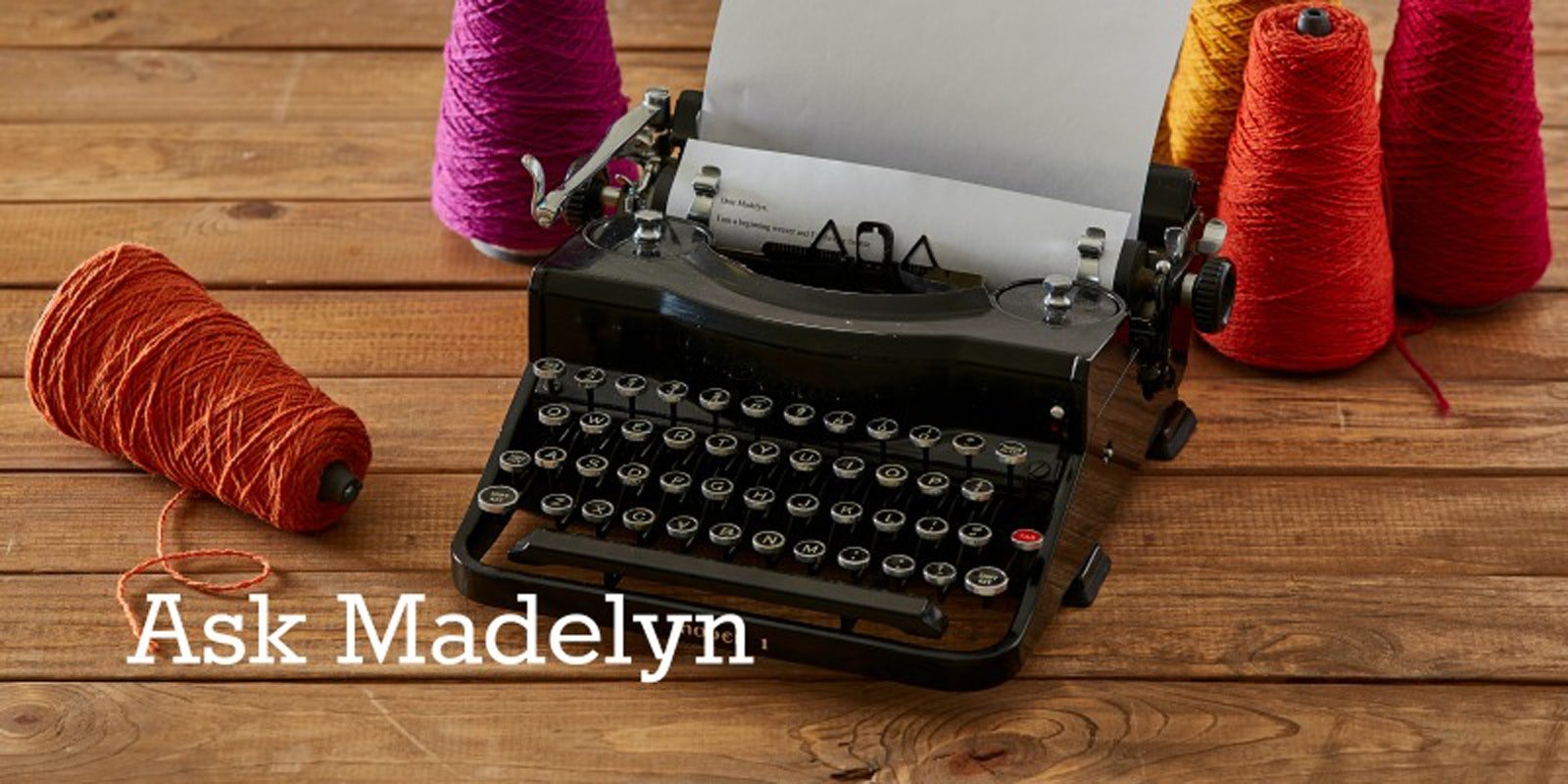Hi Madelyn!
*I have randomly painted warp bundles of 30/2 silk to make a scarf. I searched for an appropriate pattern, since I’ve not worked with pure silk before. There is a lovely 4-shaft pattern in The Best of Weaver's Huck Lace that perfectly suited my needs and calls for 30/2 silk! I warped my loom exactly as instructed and started experimenting with weft materials. I assumed a 30/2 weft would be the best choice, but was surprised and saddened to see my beautiful warp colors virtually disappear behind the weft! *
Is this pattern too weft-faced for my needs? Could you suggest a change in sett or weft thread or perhaps pattern that will give my scarf a nice “hand” but still show off my beautiful hand-dyed warp?
—Debbie
Hi Debbie!
Several factors are combining to cause the loss of the beautiful colors of your space-dyed warp. First of all, whenever you cross a space-dyed warp with a weft (whether solid or space-dyed itself), if the weft shows at all, it will interrupt the stretches of solid color in the warp. Sometimes the result can be pleasing, but the warp colors will be diluted, usually with a spotty blend of warp and weft. For that reason, a warp-faced or warp-emphasis weave structure is usually the best choice if you want the space-dyed warp colors to show. With warp-emphasis twills, for example, the weft does show a bit, but the stretches of warp floats will give the warp colors predominance. Usually, too, the weft is a dark value to deepen (rather than wash out) the warp colors.
Huck lace is a balanced plain weave (same number of warp threads per inch as weft threads per inch) with "spots" created by warp and/or weft floats. In the plain-weave areas, the interlacing of warp and weft will interrupt the warp colors as described above. Where warp floats occur, you'll see 5-thread floats of the warp colors. Where weft floats occur, you'll see 5-thread floats of the weft colors. On the reverse side of the cloth, the opposite floats occur (where there are warp floats on the face, there are weft floats on the back and vice versa). If your particular draft shows mostly weft floats and plain weave on the face, you'll see warp floats on the back when you take the cloth off the loom. Even so, however, the long stretches of solid color in the warp will be interrupted.
If you really want to see the colors in your warp, I would sett the 30/2 silk at 36 ends per inch and choose a twill pattern (if you are limited to four shafts, look for something in Marguerite Davison's A Handweaver's Pattern Book or Anne Dixon's The Handweaver's Pattern Directory. Use a tie-up that raises only one shaft on each treadle (1/3 twill). The "right" side of the scarf will be on the back as you weave. If you are willing to raise three shafts for every pick, you can weave the fabric face up (warp floats will show on the top as you weave). You can use 30/2 silk for the weft, but in a dark color (the darkest hue in your space-dyed colors or even darker or black). You will have to experiment a bit with weft sett. You want it to be quite a bit less than the warp sett (24 ppi, for example). You might even sett the warp a bit closer than 36 epi, whatever it takes to produce a stable interlacement with a soft hand that predomimately shows the warp. (You could use 60/2 silk as the weft instead of 30/2 so that it shows even less.)
If you do make these changes, let me know how it goes!
—Madelyn
If you have a weaving question please email Madelyn! View related & recent "Ask Madelyn" posts! Posted December 11, 2013. Updated April 5, 2019.

